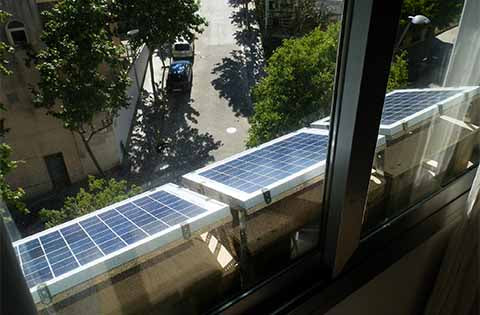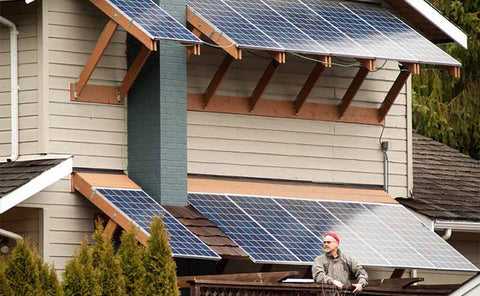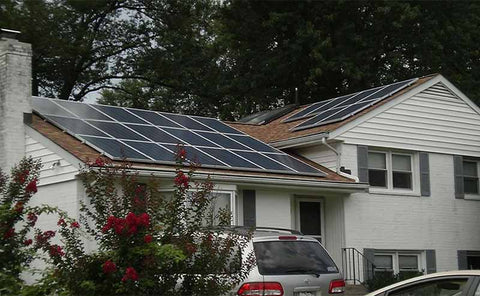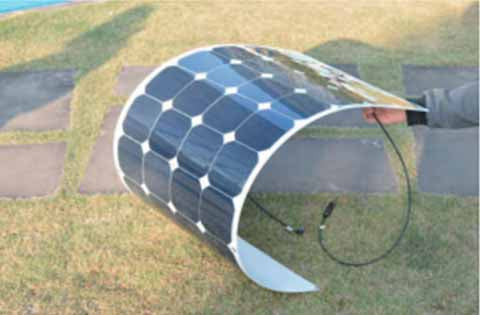Applying solar panels into the house may be a wise choice for owners to achieve energy independence. And there are actually a few ways you can solar power your apartment or condo --- even if you don`t have a suitable roof or a willing landlord.
1: Join a community solar project
Community solar projects are large-scale solar farms that are built locally and power multiple homes in a community. They’re a great option for people who, for whatever reason, can’t put solar panels on their roof. When you join a project, you usually continue to pay your electricity bill like normal — either through your existing utility or the company that runs the project. And the cost savings can be instant. The main downside is that there aren’t that many community solar projects out there at the moment. Don’t be surprised if there aren’t any in your area. Once enrolled in the project, your monthly power bill will be going toward buying solar energy rather than carbon-intensive fossil fuel energy. You’ll also likely be paying less for power. It’s a win-win.
2: Buy plug in solar panelsPlug in solar panels — also called plug and play solar panels — are pretty much what they sound like. You can plug them into any standard wall outlet, and the energy they produce flows into your apartment, instantly solar powering some of your energy use. plug and play solar kits are a great option for renters. You can mount them anywhere on your apartment that gets a lot of sun — a roof, railing, balcony. And they can be pretty affordable. Just be prepared to do a bit of research to figure out the right size kit for you, and if your city has any regulations on these types of kits. Contact your landlord or HOA and get permission to add plug-in panels to your apartment or condo. And Knowing what kit you plan to buy beforehand will help when you contact your utility.
Contact your electric utility and ask them about their policy on plug and play solar systems. If they allow them, inform them of your intentions to install one. This is where knowing the size and specs of your preferred system is helpful. Some plug in solar brands mention they will provide electrical diagrams should your utility ask. Buy and install the plug in solar panels according to the brand’s instructions. Many brands claim you can do it in less than an hour.
Yes, it’s a bit of a hassle to reach out to your landlord and utility and do research on what size kit to get. But contrast that with how much research and paperwork you’d have to do if you were a homeowner installing solar panels on your roof.
3: Ask your landlord to install solar panels on your roof
This option works best if you rent a house with a suitable roof. You’ll be trying to convince your landlord to do a major home upgrade, so you’ll have to come prepared. You’ll need to crunch the numbers for your landlord and show them the cost savings and environmental impact. You may even want to get some quotes from local solar installers.
4: Make your own portable solar panel system
This may be a poor option for most renters. Because you’re essentially building a small off-grid power system, you need to buy all the equipment and connect it all yourself. It’s requires knowledge of solar electrical systems, and it’s the costliest route in terms of price per watt.
5: Buy green energy via renewable energy certificates
Renewable energy certificates (RECs) track renewable energy as it moves through the US power grid. When a renewable energy provider — like a solar or wind farm — produces energy, they receive RECs to represent that energy. The provider can then sell the RECs as a sort of proof of ownership of that energy. If you buy RECs equivalent to your energy consumption, you’ve technically powered your home entirely with green energy. But RECs are far from a perfect option. A lot of times, they don’t lead to any additional clean energy on the grid. They just end up being a way for clean energy projects to make a tiny bit of side income. In most places around the country, RECs are pretty cheap. If buying them is the only way to ‘solar power’ your apartment, then I think they’re a tad bit better than doing nothing.
There are ways to solar power your apartment — even if your apartment doesn’t get any sun, and your landlord doesn’t want to install solar panels.
- Community solar doesn’t require a roof, can instantly reduce your power bill, and helps support solar energy projects in your community.
- Plug in solar panels can be installed in minutes and will instantly start solar powering some of your energy use.
- Rooftop solar panelsare an option, too, but you’ll have to crunch the numbers and sell your landlord on the idea.
If those options don’t work for you, you can build a DIY solar power system or buy green energy via RECs. Neither of these last two options is ideal in my eyes, but in some cases they may be better than nothing.
Twitter: Solarparts Instagram: Solarparts
Tumblr: Solarparts Pinterest: Solarparts
Facebook: Shenzhen Solarparts Inc
Email address: Philip@isolarparts.com
Homepage: www.isolarparts.com





